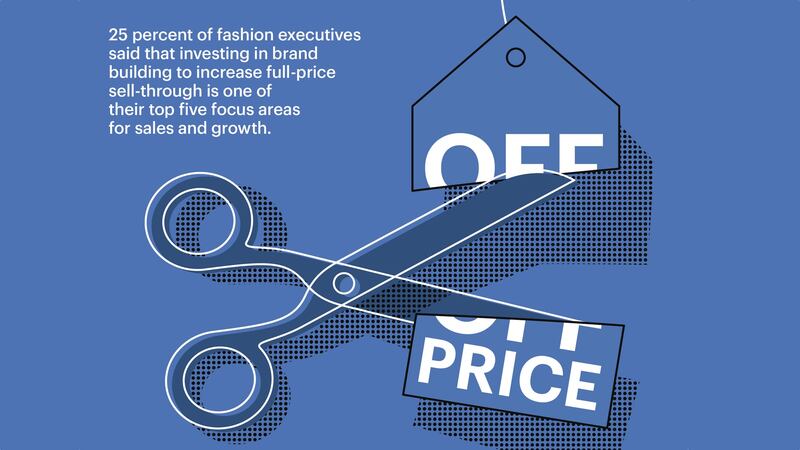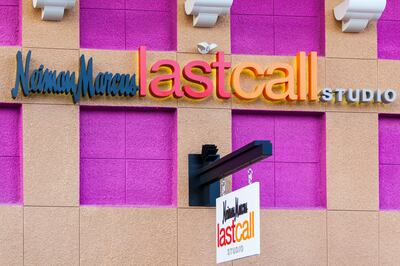
The Business of Fashion
Agenda-setting intelligence, analysis and advice for the global fashion community.

Agenda-setting intelligence, analysis and advice for the global fashion community.

The author has shared a YouTube video.
You will need to accept and consent to the use of cookies and similar technologies by our third-party partners (including: YouTube, Instagram or Twitter), in order to view embedded content in this article and others you may visit in future.
LONDON, United Kingdom — From mono-label outlet stores to multi-brand off-price concepts and outlet malls, off-price formats have become an important part of the fashion retail landscape, and the off-price sector will continue to grow in 2018. Today's shoppers continue to demand lower prices and desire a treasure-hunt experience. At the same time, off-price offers brands and retailers a channel for clearing excess inventory quickly. This is an important consideration because of the difficulty of forecasting consumer preferences accurately. Excess inventory constituted $472 billion of total lost retail revenue globally in 2015, an increase from $362 billion in 2012. Overstocks have been further exacerbated by the increase in online shopping, where return rates average more than 20 percentage points above offline shopping. Off-price is an apparent solution to these challenges, and in the coming year, brands and retailers continue to appreciate these aspects of the off-price channel.

Neiman Marcus outlet | Source: Shutterstock
The United States was quick to adopt off-price formats, much to the chagrin of conventional department stores; in 2016, two-thirds of shoppers in the United States shopped at an off-price retail store. Off-price specific chains such as those under TJX (whose portfolio of chains include T.J. Maxx and Homegoods) were for a long time the most prominent and continue to exhibit impressive sales growth. Traditional department stores responded by launching their own off-price versions — including Neiman Marcus Last Call, Nordstrom Rack and Saks Off Fifth. Nordstrom also acquired the off-price retail site Hautelook. In addition, factory outlet centres have expanded, exemplified by Tanger Factory Outlets' growth of approximately 10 percent annually since 2010. And online players like Bluefly, The Outnet and Yoox have continued to expand, creating an even greater number of off-price alternatives.
More importantly though, following a period of aggressive footprint expansion, slowing sales and tight competition amongst off-price concepts signals, the US market is approaching saturation and cannibalisation. There are signs that the US off-price market may have reached a tipping point and could prove a less viable source of growth going forward, something fashion players in the US should be wary of as they look towards 2018.
ADVERTISEMENT
Meanwhile, other regions have discovered the potential of off-price. Between 2003 and 2017, the number of off-price stores in Europe has more than doubled. This growth rate is expected to continue in 2018. As was the case with the early US market, today’s European market is dominated by factory outlet centres and off-price chain T.J. Maxx. Furthermore, online players like Yoox are gaining ground. Asia is experiencing early expansion: the total outlet market in Korea has grown about 5 percent over the last year; the premium outlet market has grown the most, approximately 12 percent. In China the market for outlet factories is estimated to reach $12.2 billion in 2018.
Brands saw their brand image or margins suffer when off-price options started cannibalising sales of full-priced, higher-end items.
Yet as the off-price market is expected to expand in the coming year, particularly in Europe and Asia, companies need to take into account the potential pitfalls of this channel. In the US, some brands that leveraged off-price stores to grow sales volumes saw their brand image or margins suffer when off-price options started cannibalising sales of full-priced, higher-end items. Michael Kors and Ralph Lauren have been cited in the press as examples of companies that implemented an off-price strategy which ended up back ring. Conversely, Coach has achieved financial improvement partly from reducing its exposure to outlet stores. The sentiment that there can be too much movement away from full-price is slowly catching on more broadly. In this year's BoF-McKinsey Global Fashion Survey, 25 percent of fashion executives said that investing in brand building to increase full-price sell-through is one of their top five focus areas for sales and growth.
In 2018, as the off-price channel continues to grow in Europe and Asia, fashion executives should carefully consider their strategy for this channel and determine how to reap its benefits while avoiding the potential downward spiral seen in some cases. They need to take into consideration the trade-off between short-term sales growth and brand image. For example, differentiating factors such as merchandise, location and customer service can help ensure that full-price and off-price co-exist as complementary and mutually beneficial channels. In addition, fashion companies should consider alternative strategies for dealing with excess inventory and online returns and avoid pursuing off-price channel strategies for the wrong reasons.
This article first appeared in The State of Fashion 2018, BoF and McKinsey & Company's in-depth report on the global fashion industry. Download it here.

From analysis of the global fashion and beauty industries to career and personal advice, BoF’s founder and CEO, Imran Amed, will be answering your questions on Sunday, February 18, 2024 during London Fashion Week.
The State of Fashion 2024 breaks down the 10 themes that will define the industry in the year ahead.
Imran Amed reviews the most important fashion stories of the year and shares his predictions on what this means for the industry in 2024.
After three days of inspiring talks, guests closed out BoF’s gathering for big thinkers with a black tie gala followed by an intimate performance from Rita Ora — guest starring Billy Porter.